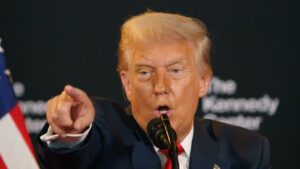Politics
Here’s what to remember if Donald Trump tries to claim he won early on election night

While we can’t be certain who will win the presidential election, we can predict one thing with a high degree of confidence: Donald Trump will claim he won. And he’ll probably do this on Tuesday night. I want to lay out why it’s important not to jump to conclusions about who is winning, and instead prepare for the vote counting to take a few days — at least.
In 2020, it took four days after the polls closed for the race to be called for Joe Biden. This was a slower count than usual, and for good reason: Many states had expanded their use of early and absentee voting due to the pandemic, and it can simply take longer to count all those ballots. On top of that, voter turnout was unusually high — 158 million people voted, nearly 22 million more than had voted four years earlier.
One of the patterns we’ve seen in recent elections will likely occur this year as well.
It’s unlikely that the vote counting will take quite as long this time. States have become more efficient at counting early and absentee ballots, and a number of states have scaled back the accessibility of such votes. Also, simply because Covid is no longer as much of a threat, more people are voting in person this year.But one of the patterns we’ve seen in recent elections will likely occur this year as well: the “blue shift” (or “red mirage”). In many states, in-person votes get counted before early and absentee ballots do. Thanks in part to Trump’s disparaging of mail-in voting in recent years, Democrats are more likely to cast an early vote than Republicans are.
What this means is that the first results reported on Tuesday evening are likely to trend a bit Republican, then swing toward the Democrats as the mail-in ballots are totaled. Now, that doesn’t matter for the final count, but it could affect how the media covers the counting. As he did in 2020, Trump will use the early Republican-leaning vote count to try to claim that he has won and that later votes coming in for Harris are signs of malfeasance. This is definitely not true! But it will likely be the basis of lawsuits he files. He is already claiming fraud and the election hasn’t even happened yet.
Now, there’s no guarantee this will go on for very long. Right now, the polls suggest that the swing states are basically tied. It’s pretty likely that the polls are off by 1 or 2 points — this is historically pretty normal — and they’ll probably be off in the same direction across different states. Which means there’s a plausible chance that either Harris or Trump will win most or all of the swing states. If it looks like it’s heading that way on Tuesday night, we might not need many days to figure this out. We could even wake up the next morning with a new president-elect.But chances are we’re going to be focusing on a handful of states overnight Tuesday. I want to mention four that are likely to be both close and slow:
Pennsylvania is the big prize this year. Its 19 Electoral Votes make it very likely that whoever wins the state will become president. But under state laws, election workers will not process any ballots — including the early and mail votes — until the polls close at 8:00 p.m. ET. Given how close the election appears right now, it could take a day or two to call the state.
Arizona, with 11 electoral votes, has an unusually long ballot this year, which could delay vote counts. And the mail-in ballots received on Election Day won’t be tabulated until after the polls close that evening. Once the state starts counting it tends to move pretty quickly, but most outlets did not call the state in 2020 until more than a week after the election, so it may be hard to call it on Tuesday night.
Michigan, with 15 electoral votes, could also take a while. The state spans two time zones, with the Upper Peninsula not closing its polls until 9:00 p.m. ET.
Nevada, with six electoral votes, took several days to be called in 2020, and a new law allows ballots postmarked by Election Day to be counted if they’re received up to four days after the election is over. Again, if the election is very close, this state could be tough to call.
As we watch the votes get tallied, it will be useful to observe how voting patterns differ from four years ago. That and exit polls can give us an idea of how things are going to develop as the counting goes on.But chances are, we’ll just need to be patient. Yes, we’ll want to know quickly, and yes, Trump will try to exploit the uncertainty for his own ends. But it’s really just a matter of counting the votes. And the time that it takes to finish the task is evidence that the counters are taking their job seriously.
Seth Masket is a professor of political science and director of the Center on American Politics at the University of Denver. Follow his Substack at https://smotus.substack.com/.
Politics
Inside the DNC’s money problems
The Democratic National Committee has fallen far behind in the cash race.
After a brutal 2024 election and several months into rebuilding efforts under new party leadership, the DNC wildly trails the Republican National Committee by nearly every fundraising metric. By the end of June, the RNC had $80 million on hand, compared to $15 million for the DNC.
And the gap — nearly twice as large as it was at this stage in Trump’s first presidency — has only grown in recent months, a Blue Light News analysis of campaign finance data found, fueled by several distinct factors.
Major Democratic donors have withheld money this year amid skepticism about the party’s direction, while the small-dollar donors who have long been a source of strength are not growing nearly enough to make up the gap. And the party has quickly churned through what money it has raised in the first half of the year, including spending more than $15 million this year to pay off lingering expenses from Kamala Harris’ presidential campaign.
The DNC has less cash this summer than it did at any point in the last five years.
“I understand that donors want some kind of a reckoning,” said Steve Schale, a Florida-based Democratic strategist. “But I also think that the kind of state party building that I think [DNC Chair] Ken [Martin] wants to do at the DNC is really vital to our success. And so I hope people kind of get over themselves pretty quick.”
The fundraising troubles reflect ongoing questions about the DNC’s direction under Martin, who was elected earlier this year, and comes as the DNC has faced months of bitter infighting. Continued cash shortages could limit the party’s ability to rebuild for a new cycle. And the DNC’s money woes stand in particularly stark contrast to Republicans, who have leveraged President Donald Trump’s fundraising prowess to raise record sums.
“Chair Martin and the DNC have raised more than twice what he had raised at this point in 2017, and our success in cycles thereafter is well documented. Under Ken, grassroots support is strong,” DNC Executive Director Sam Cornale said in a statement. “It’s now time for everyone to get off the sidelines and join the fight. Rebuilding a party is hard — rebuilding relationships and programs take time and will require all hands on deck to meet this moment.”
The DNC’s money woes stand out among major Democratic groups, Blue Light News’s analysis found: Democrats’ House and Senate campaign arms are near financial parity with their Republican counterparts, and several major donors who have withheld funds from the DNC are still giving to those groups.
“Donors see the DNC as rudderless, off message and leaderless. Those are the buzzwords I keep hearing over and over again,” said one Democratic donor adviser, granted anonymity to speak candidly about donors’ approach.
The DNC, on the other hand, touts Democrats’ success in state and local elections this year as proof the party’s investments are paying off. The group also began transferring more funds to state parties this year, and argues it is better-positioned financially than it was at this time in 2017, when it also significantly trailed the Trump-powered RNC.
Some Democrats attribute the slowdown among donors primarily to the need for a break after 2024, and the challenges of being the party out of power. Large donors would rather bump elbows with high-profile figures like a president or House speaker; Democrats cannot put on those kinds of fundraising events right now. The DNC also struggled for cash during Trump’s first presidential term, and that did not stop Democrats from taking back the House in 2018, or winning the presidency in 2020.
Still, the longer the DNC struggles to build up cash, the harder it will be to close that gap heading into the 2026 midterms and beyond. And the fact that other party committees are not seeing the same financial struggles puts more responsibility on Martin and his team to figure out a way to right the ship.
“Obviously, the sooner the DNC and other Democratic-aligned groups can get investment, the better. It’s better for long-term programs on the ground, it’s better to communicate our message early on,” said Maria Cardona, a DNC member and Democratic strategist. “However, I think you’re going to see donors coming into those things because they are starting to see Democrats fighting back, and that’s what they want.”
Just 47 donors gave the maximum contribution to the DNC in the first half of the year, according to the Blue Light News analysis of the party’s filings with the Federal Election Commission. Over the same period in 2021, more than 130 donors gave a maximum contribution. (In 2017, when the party was similarly struggling with large donors, the figure was 37.)
That means dozens of the DNC’s biggest donors from early last cycle have not yet given to it this year — accounting for several million dollars the party group has missed out on this time.
Many of those biggest donors have continued to contribute to other Democratic groups and candidates, indicating they are still aligned with the party and willing to dole out cash — though often not as much, and not to the DNC.
In the run-up to the DNC chair election earlier this year, several large donors publicly preferred Ben Wikler, the Wisconsin Democratic Party chair, to Martin, who long served as the leader of Minnesota’s Democratic-Farmer-Labor Party and also led the Association of State Democratic Parties.
“If Ken [Martin] really wanted to impress donors, he’d go do 20 or 30 salon events with donors and let them yell at him,” said the Democratic donor adviser. “If you take that on the chin, make some changes, then I think we could see some movement. But [he’s] not going to do that.”
With large donors lagging, the DNC has touted record grassroots fundraising from online donors. On ActBlue, the primary Democratic online fundraising platform, the group raised $33.8 million over the first six months of the year, up from $27 million over the same time in 2021.
But the total number of online donors was roughly the same in both periods — suggesting online donors are giving more than they were four years ago, but the group’s donor base has not expanded substantially.
Most DNC donors this year were contributors to Harris’ campaign or the DNC last cycle, according to the Blue Light News analysis. Another 14 percent of donors had no record of donations on ActBlue last cycle, suggesting the DNC is finding new small donors — but not nearly fast enough to make up for the drop-off among large donors.
In fact, the rate of online giving to the DNC has slowed in recent months. The party’s best online fundraising month was March, when it raised $8.6 million on ActBlue from 254,000 donors; in June, the party raised $4.1 million on the platform from 157,000 donors.
And reaching those online donors comes at a cost: The DNC has spent $5.7 million on online fundraising this year, according to its FEC filings. On Meta, which includes Facebook and Instagram, it is one of the largest political spenders this year, according to the platform’s data. The total spent on fundraising expenses so far is nearly as much as the DNC has sent to state parties this year.
Another set of major expenses also stands out for draining the DNC’s coffers: continuing to pay off expenses from Harris’ failed 2024 presidential bid.
Her campaign ended last year’s election with roughly $20 million in unpaid expenses, according to people familiar with its finances, although none of Harris’ campaign committees or affiliates ever officially reported debt. The DNC has spent $15.8 million total on coordinated expenses with the Harris campaign this year, including $1.3 million in June. A party spokesperson declined to comment on future campaign-related payments.
Elena Schneider contributed to this report.
Politics
Conservatives mock Comey over Taylor Swift video
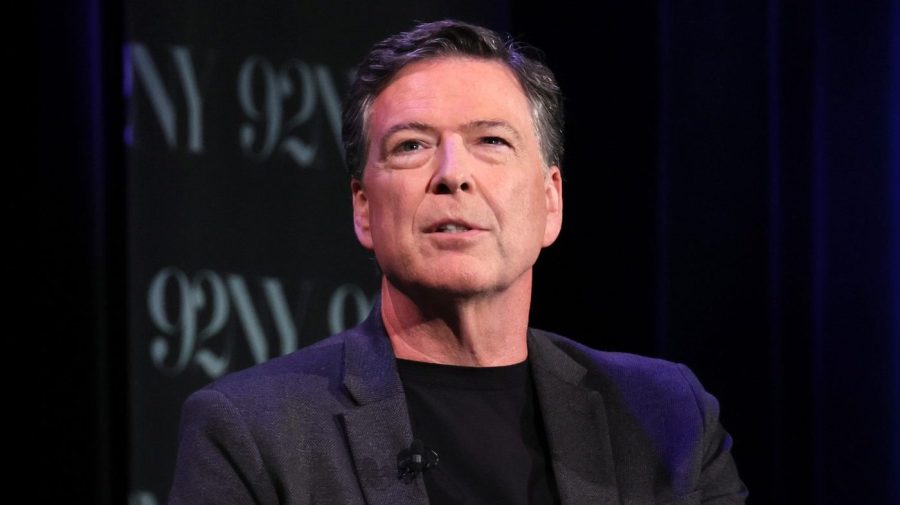
Conservatives are mocking former FBI Director James Comey over a post he made on his Substack on Sunday in which he discussed his admiration for pop superstar Taylor Swift. The post features a video of Comey calling Swift “a truly inspirational public figure” and noting her recent appearance on NFL stars’ Jason and Travis Kelce’s…
Read More
Politics
Trump criticizes ‘fake news,’ Democrat, Zelensky in series of posts
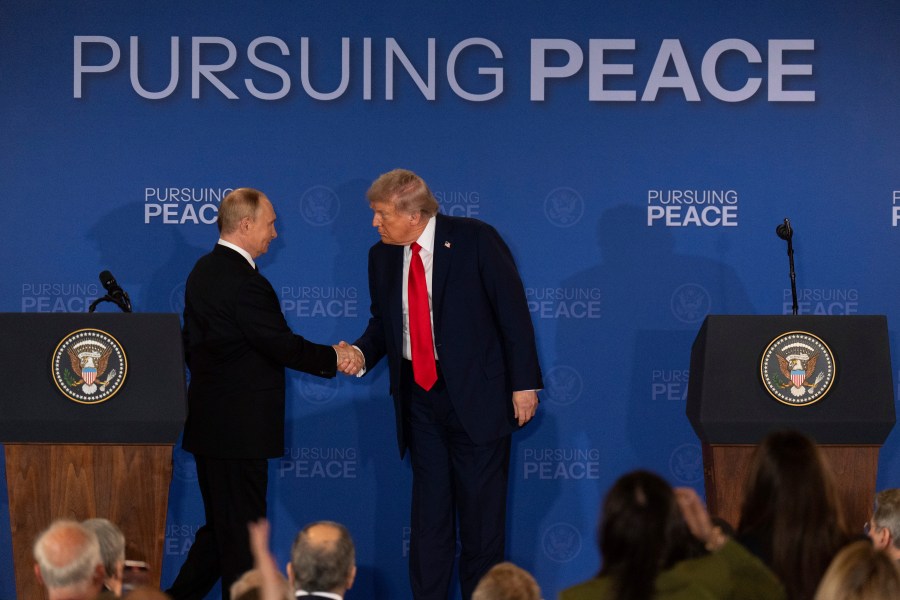
President Trump late Sunday in a pair of posts on Truth Social ripped the media and a prominent Democrat for criticisms of his summit on Friday with Russian President Vladimir Putin. Trump met with Putin in Alaska, and will meet Monday with Ukraine President Volodymyr Zelensky as he seeks to find a way to end…
Read More
-
Uncategorized9 months ago
Bob Good to step down as Freedom Caucus chair this week
-

 The Josh Fourrier Show9 months ago
The Josh Fourrier Show9 months agoDOOMSDAY: Trump won, now what?
-
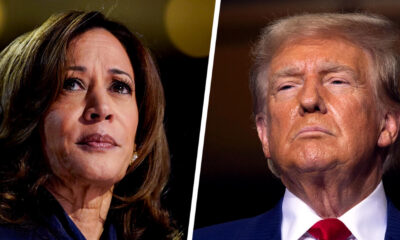
 Politics9 months ago
Politics9 months agoWhat 7 political experts will be watching at Tuesday’s debate
-
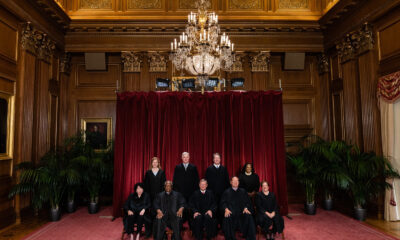
 Politics9 months ago
Politics9 months agoHow Republicans could foil Harris’ Supreme Court plans if she’s elected
-
Economy9 months ago
Fed moves to protect weakening job market with bold rate cut
-

 Politics9 months ago
Politics9 months agoRFK Jr.’s bid to take himself off swing state ballots may scramble mail-in voting
-
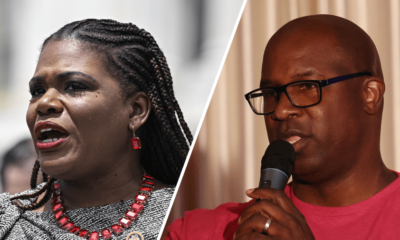
 Politics6 months ago
Politics6 months agoFormer ‘Squad’ members launching ‘Bowman and Bush’ YouTube show
-

 The Dictatorship6 months ago
The Dictatorship6 months agoPete Hegseth’s tenure at the Pentagon goes from bad to worse






